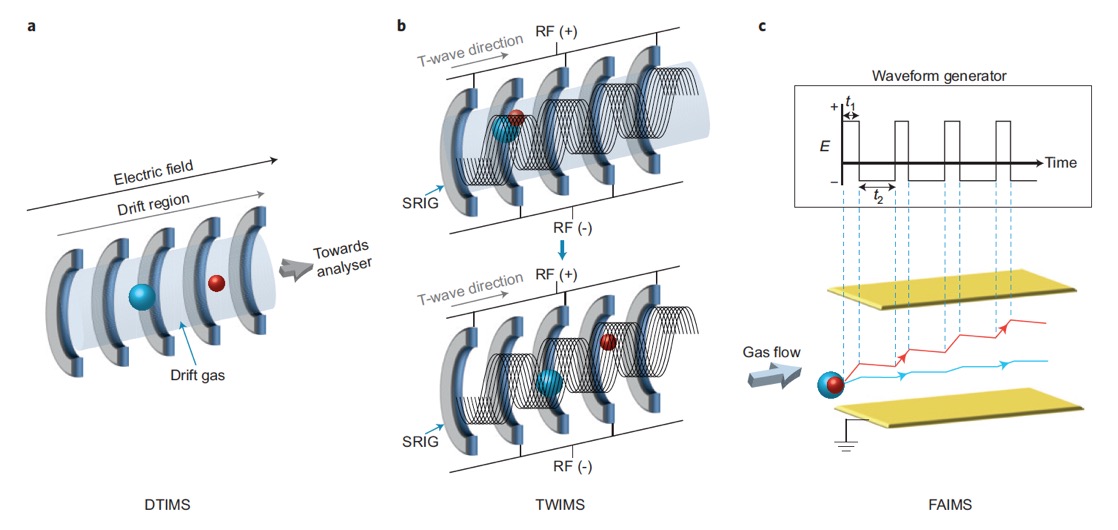Ion mobility review
Lanucara F, Holman SW, Gray CJ, Eyers CE. (2014) The power of ion mobility-mass spectrometry for structural characterization and the study of conformational dynamics. Nat Chem. 2014 Mar 21;6(4):281-94.
doi: 10.1038/nchem.1889. [PDF] [PUBMED]
Abstract
Mass spectrometry is a vital tool for molecular characterization, and the allied technique of ion mobility is enhancing many areas of (bio)chemical analysis. Strong synergy arises between these two techniques because of their ability to ascertain complementary information about gas-phase ions. Ion mobility separates ions (from small molecules up to megadalton protein complexes) based on their differential mobility through a buffer gas. Ion mobility-mass spectrometry (IM-MS) can thus act as a tool to separate complex mixtures, to resolve ions that may be indistinguishable by mass spectrometry alone, or to determine structural information (for example rotationally averaged cross-sectional area), complementary to more traditional structural approaches. Finally, IM-MS can be used to gain insights into the conformational dynamics of a system, offering a unique means of characterizing flexibility and folding mechanisms. This Review critically describes how IM-MS has been used to enhance various areas of chemical and biophysical analysis.

doi: 10.1038/nchem.1889. [PDF] [PUBMED]
Abstract
Mass spectrometry is a vital tool for molecular characterization, and the allied technique of ion mobility is enhancing many areas of (bio)chemical analysis. Strong synergy arises between these two techniques because of their ability to ascertain complementary information about gas-phase ions. Ion mobility separates ions (from small molecules up to megadalton protein complexes) based on their differential mobility through a buffer gas. Ion mobility-mass spectrometry (IM-MS) can thus act as a tool to separate complex mixtures, to resolve ions that may be indistinguishable by mass spectrometry alone, or to determine structural information (for example rotationally averaged cross-sectional area), complementary to more traditional structural approaches. Finally, IM-MS can be used to gain insights into the conformational dynamics of a system, offering a unique means of characterizing flexibility and folding mechanisms. This Review critically describes how IM-MS has been used to enhance various areas of chemical and biophysical analysis.

